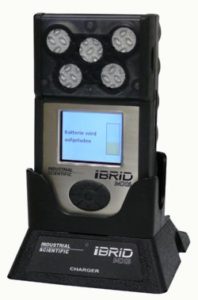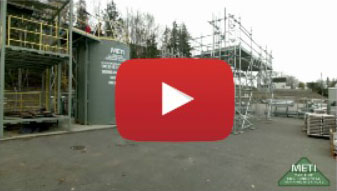Gas Detection Training
Gas Detection Training
METI’s Gas Detection Training Course is designed and developed for anyone who works in plant sites, confined spaces, pipeline operations, drilling operations, servicing operations or oilfield operations where toxic gases and/or lower explosive limits may be found.
We help you to identify toxic gases and lower explosive limits in hazardous atmospheres and to use various types of gas detection monitors.
Gas Detection Training provides instruction for anyone working in or around toxic gases (for example Benzene, Sulfur Dioxide (SO2), Nitrogen Oxides (NOx), Petroleum Coke, Formaldehyde) and lower explosive limits (the lowest concentration/percentage of a gas or a vapor in air capable of producing a flash of fire in presence of an ignition source (arc, flame, heat)).
By completing our Gas Detection Training Course you will be able to identify toxic gases and lower explosive limits in hazardous atmospheres and be able to safely and effectively use various types of gas detection monitors.
Instruction in this Gas Detection Course with METI is a cost-effective way to ensure you or your team have the skills and knowledge to safely and effectively monitor for toxic gas and lower explosive limits. Confined spaces can, and often do, contain toxic gases and/or lower explosive limits.
Many work sites, whether in processing, manufacturing, construction or oil and gas, require atmospheric testing for contaminants. Having the skills and knowledge to properly use gas detection monitors is key to working safely in these environments. This Gas Detection Course provides you with the skills and knowledge you need.
Gas Detection Training Course Key Benefits
Our Gas Detection Course provides you with what industry is looking for:
- Gas Detection Course instruction from industry-experienced and certified instructors
- Introduction to common gases and their properties, as found on most industrial construction work sites
- Gases most often tested for
- Testing procedures to be followed
- Usage of International Scientific Corporation’s gas-detecting monitors to assess atmospheres
- Identify where gas detection monitors are commonly used
- Distinguish among the three classes of commonly used gas detection monitors
- Identify who installs fixed monitors
- Describe the principle of operation of an electronic gas detection monitor
- Identify the major components of an electronic gas detection monitor
- Identify where each class of monitor is used
- Indicate where the worker may wear the personal monitor
- Indicate where to position the sensor of a portable monitor
- Indicate maintenance measures for each class of monitor
- Indicate the limitations of an electronic gas detection monitor
- Indicate the advantages and disadvantages of both a gas tube and an electronic monitor
- Define calibration
- Indicate whom the user should follow for recommended calibration protocols
- Indicate the general suggestions for configuring, calibrating and calibrating gas detection monitors
- Indicate actions the user should take if it is suspected that the instrument has been subjected to any condition that could have as adverse effect on the unit
- Calibrate a gas detection monitor
- Indicate the purpose of a bump test
- Indicate when a bump test should be performed
- Define: Lower explosive limit, Upper explosive limit, Hot work
- Identify four types of dangerous atmospheres
- Indicate what areas of the confined space must be tested
- Indicate the hazard(s) of an atmosphere that is: Explosive, Oxygen enriched, Oxygen deficient, and Toxic
- Identify the percent of the LEL of a flammable or explosive substance in an atmosphere that would prohibit a worker from entering that atmosphere
- Identify the oxygen content of normal, outside air
- Identify the hazard of an oxygen-enriched atmosphere
- Identify what constitutes oxygen deficiency
- Identify the minimum acceptable oxygen level for work without an air-supplied respirator
- Differentiate among the hierarchy of controls
- Identify the upper and lower explosive limits for H2S (Sour Gas)
- Describe the principle of operation of a tube monitor
- Identify two types of gas detector tube monitors
- Express a percentage of a gas as parts per million
- Identify what can affect detector tube accuracy
- Perform the generic steps for conducting a pre-service check
- Perform the generic operating instructions for detector tube devices

METI trains with various gas monitors, including Ibrid’s MX6
Users of gas detectors must understand much about gas detection before entering into potentially hazardous environments. This cannot be achieved by simply providing workers with gas monitors. Even as gas detectors become easier to use, injuries and deaths in our workplaces will continue as a result of improper use of the instruments. Workers should understand how to properly operate and maintain their gas detection instruments at all times. The workers must use the gas detectors in a way that ensures their safety, every day. METI’s Gas Detection Training instructs your workers on the principles and practices of gas detection and gives them hands-on training with the monitors.
Your Gas Detection Training Ticket/Certificate
Upon completion of this training, you will receive a wallet-size Ticket/Certificate that will show prospective employers that you have the right credentials.
Employers may require confirmation of your Certificate, so feel free to have your prospective employer contact METI to confirm your certification.


